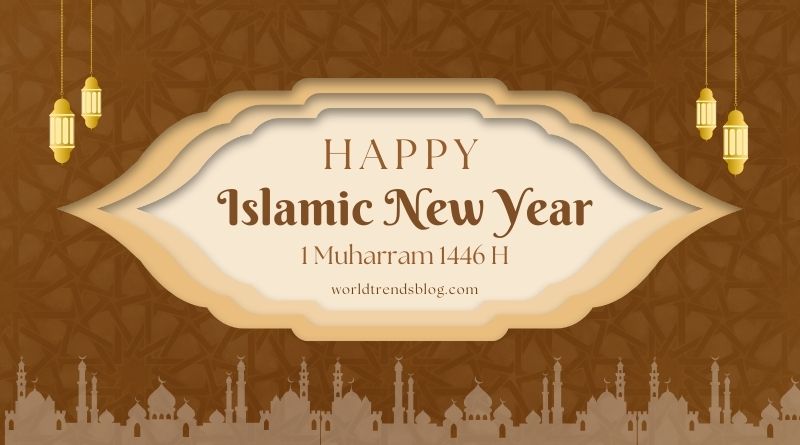Islamic New Year Significance & Religious Traditions
The Islamic New Year is also known as the Hijri New Year. It is according to the Lunar calendar. According to Islamic beliefs, the first day of the year is the 1st of Muharram. The year started with the Holy Month Muharram and Muslims respect the worth of this holy month.
When Islamic Year is Observed to be Started in 2024?
Islamic Year is observed on Saturday, the 6th of July 2024, or Sunday the 7th of July 2024. The New Year is not celebrated on a fixed date in the Gregorian Calendar. It varies every year because the Lunar Calendar has variations.
Which is the First Month of the Islamic New Year?
Muharram is the most sacred month and the year is started from this Holy month. This month is associated with the martyrdom of Imam Hussain A.S. and their family for saving Islam. The 10th of Muharram is called Ashura. This is the day when the Nephew of Prophet Muhammad PBUH was Martrayed brutally. Hence this month is very sacred and respectable for Muslims.
Name of Islamic Months of Year
Like the Gregorian Calendar, the Lunar Calendar also consists of 12 months. Such as
- Muharram
- Safar
- Rabbi Ul Awwal
- Rabbi Ul Sani
- Jamadi Ul Awwal
- Jamadi Ul Sani
- Rajab
- Shabaan
- Ramzan
- Shawal
- Zil Kadd
- Zil Hajj
Sacred Months of the Islamic Calendar
Out of 12 Islamic Months, Four are of great importance and are sacred months of the year. These are of great importance and respect for all Muslim communities across the world. Such as
- Muharram
- Rajjab
- Zil Qaada
- Zil Hajj
How Muslims Celebrate New Year?
Muslims celebrate their new year with great respect and religious trends. The 1st month of the Muslim year is also called the month of sorrow because of the Martyrdom of Imam Hussain A.S and their family in Karbala.
Traditions for New Year Celebrations
That’s why Muslims spend the whole day 1st Muharram in
- Prayers
- Sadqa
- Reciting Holy Quran
- Fasting
- Islamic Gatherings
- Seeking Forgiveness
Because according to Muslim beliefs, the 1st day of the new year is important to seek for
- Forgiveness
- Ask for Health
- Wealth
- Mental & Physical Satisfaction
- Purity of Heart
- Fulfiness of their Desires
This is the way Muslims are meant to celebrate their Lunar New Year 2024 with the same traditions and respect.
Facts Behind Fasting on 9th & 10th Muharram
- It is Sunnah-e-Rasool SAW to fast on the 9th and 10th of Muharram. It is just to thank Allah Almighty for destroying Feroon against Hazrat Musa A.S.
- Yahoodi also fasted on the 9th of Muharram on Hazrat Musa’s Victory. So Muhammad SAW maintained a difference between Muslims and Yahoodi. Prophet SAW said Muslims will have two fasts either on the 9th and 10th of Muharram or the 10th and 11th of Muharram.
- It is the day (10th Muharram) when the Final Day of Judgment will held. That’s why Muhammad SAW fast. Because to appear before Allah Almighty in the fasting condition is so humble for a Muslim.
What is the Day of Ashura?
The 10th of Muharram is called the Day of Ashura. This is the day when the battle of Karbala ended. Imam Hussain A.S. was martyred by Yazeed and his army on the 10th of Muharram. That’s why this is called the Day of Ashura.
People perform a specific type of worship in honor of the sacrifice of Imam Hussain A.S. and their family. Such as
- They perform Salah for them.
- People wear black clothes for the black day.
- People also arrange gatherings for awareness about the sacrifice of Muslims (Imam Hussain A.S. & their family) to save Islam for all of us.
Is Ashura a Public Holiday?
Day of Ashura is a public Holiday in Muslim Communities specifically. Almost all the business areas and learning sectors are closed on the 10th of Muharram.
Final Verdict
Muslims New Year is a great occasion for all Muslims. They try their best to spend the day in remembrance of Allah. 1st of Muharram is of great significance and Muslims show great respect and honor for this day. While the Day of Ashura is a public holiday. Muslims follow Muhammad SAW while celebrating the Lunar New Year.



